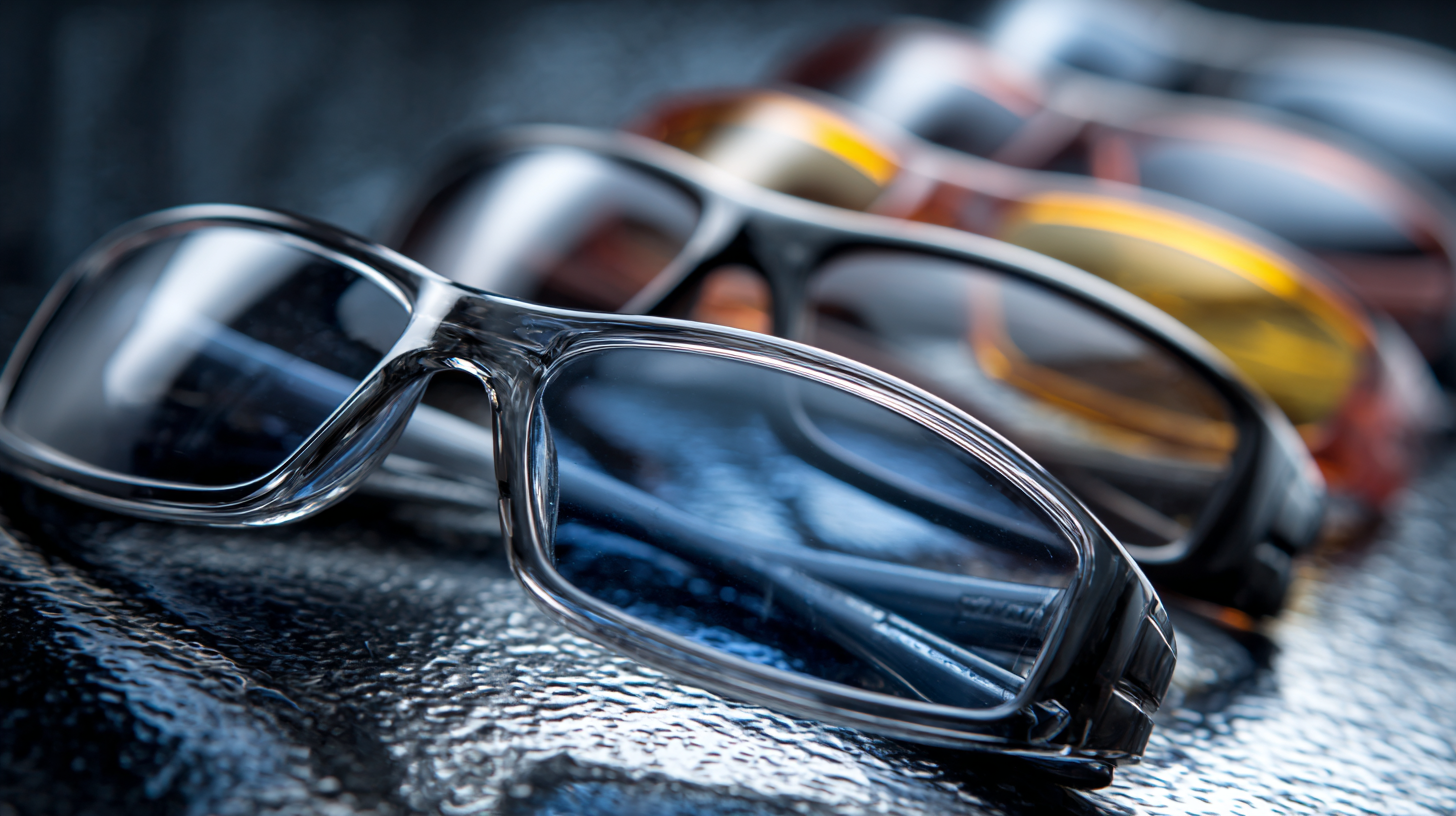In an era where eye protection and visual clarity are paramount, the choice of the right eyewear becomes increasingly critical. Polarized lenses have emerged as a popular option among consumers seeking to enhance their visual experience while safeguarding against harmful UV rays. According to the American Academy of Ophthalmology, 90% of UV rays can reach the eyes, potentially leading to cataracts and other serious conditions. This alarming statistic underscores the importance of selecting sunglasses that not only provide comfort and style but also offer superior UV protection.
The market for polarized lenses is projected to grow significantly, driven by rising awareness of the harmful effects of UV exposure and an increasing demand for high-quality eyewear. A report by ResearchAndMarkets indicates that the global polarized sunglasses market is expected to reach $21 billion by 2025, with a compound annual growth rate (CAGR) of 5.5%. As consumers become more discerning, understanding the different types of polarized lenses and their benefits is essential for making an informed choice.
This article aims to guide readers through the process of selecting polarized lenses, focusing on the attributes that ensure maximum UV protection and enhanced visual clarity. By examining key factors such as lens material, tint, and coating options, consumers can equip themselves with the knowledge necessary to optimize their eyewear choices for both health and performance.

Understanding UV radiation is crucial for maintaining optimal eye health. Ultraviolet rays from the sun can lead to various eye problems, including cataracts, macular degeneration, and photokeratitis, which is akin to sunburn on the cornea. Prolonged exposure to UV radiation can accelerate the aging process of the eyes, causing discomfort and potentially severe damage over time. Recognizing the sources of UV radiation—both direct sunlight and reflections off water, sand, or snow—can help individuals take proactive measures to protect their eyes.
The importance of protection from UV radiation cannot be overstated. Wearing sunglasses with polarized lenses that block 100% of UVA and UVB rays is a primary method of defense. These lenses not only shield against harmful rays but also enhance visual clarity by reducing glare from reflective surfaces. When selecting sunglasses, it’s essential to examine the UV protection factor, ensuring that they provide comprehensive coverage. By prioritizing eye safety and choosing high-quality polarized lenses, individuals can significantly reduce the risk of UV-related eye conditions and enjoy clearer, more comfortable vision in bright environments.

Polarized lenses are a revolutionary advancement in eyewear technology, designed specifically to improve visual clarity while significantly reducing glare. One of the key features of these lenses is their special filtering mechanism that blocks out horizontal light waves, which are primarily responsible for reflective glare. This becomes particularly important for activities such as driving, fishing, or skiing, where glare from surfaces can not only hinder performance but also pose a safety risk.
In addition to reducing glare, polarized lenses enhance visual clarity by providing sharper contrasts and clearer vision in bright conditions. This feature enables individuals to see colors more vividly and objects more distinctly. For instance, when out on the water or on a sunny day, the brightness of the surroundings can overwhelm the visual system; however, polarized lenses help to mitigate this overwhelming effect, allowing for a more comfortable and engaging experience. Overall, investing in polarized lenses can greatly enhance one’s visual experience, especially in environments where glare and brightness are prevalent.
When selecting polarized lenses, one of the most critical factors to consider is the level of UV protection they provide. The American Academy of Ophthalmology states that UV radiation can lead to severe eye conditions, including cataracts and macular degeneration. To effectively shield your eyes, look for lenses that offer 100% UV protection, ideally with high UV absorption rates, which can significantly reduce the risk of damage from prolonged exposure to sun rays.
Research from the Vision Council indicates that not all polarized lenses are created equal when it comes to UV filtration. While polarized lenses reduce glare, their ability to block UV rays varies significantly among brands and models. For optimal protection, opt for lenses that meet or exceed the ANSI Z80.3 standard, which dictates high-performance UV filtration. Furthermore, consider lenses made with materials like polycarbonate or high-index plastic, known for their superior UV blocking capabilities.
Tips for selecting the right polarized lenses: First, always check for a label that specifies UV400 or 100% UV protection; this ensures that the lenses can filter out harmful UV rays effectively. Second, consult with an eye care professional who can recommend lenses tailored to your lifestyle needs, whether for sports, driving, or casual use. Finally, don’t forget style – polarized lenses come in various designs, so you can choose a pair that not only protects your eyes but also complements your look.

When selecting the right polarized lenses for enhanced visual clarity and maximum UV protection, it's crucial to consider the material of the lenses.
Polycarbonate lenses are highly favored for their lightweight nature and exceptional impact resistance, making them ideal for outdoor activities. They provide adequate UV protection while offering a high level of comfort during prolonged wear.
However, those seeking superior optical clarity might opt for Trivex lenses, which offer a blend of lightweight properties and excellent visual acuity, along with strong UV blockage.
Glass lenses, traditionally known for their superior optical quality, may not always be the best choice for active lifestyles due to their weight and potential fragility.
Despite this, they deliver incredible clarity and scratch resistance, making them suitable for casual wear. As you navigate through options, consider your specific needs—whether it's for running, cycling, or fishing—and choose a lens material that not only fits your lifestyle but also provides the necessary protection against harmful UV rays, especially in sun-drenched environments.
When choosing polarized lenses, it’s essential to consider the industry standards that ensure maximum UV protection and enhanced visual clarity. The American National Standards Institute (ANSI) and the International Organization for Standardization (ISO) provide guidelines that eyewear must meet to be certified safe. Look for sunglasses that adhere to ANSI Z80.3 for UV protection, which stipulates at least 99% of UVA and UVB rays must be blocked. Additionally, ISO 12312-1 establishes similar criteria internationally, making it easier for consumers globally to identify reliable products.
Tip: Always check for a label or tag indicating compliance with these standards. A credible certification will assure you that your sunglasses provide the necessary protection against harmful UV rays.
Moreover, while polarized lenses effectively reduce glare, they also come with various tint options that can enhance visual clarity in different environments. For instance, grey lenses are ideal for bright and sunny conditions, while amber lenses improve depth perception on overcast days. It’s crucial to choose the tint that best matches your typical outdoor activities to maximize comfort and visual clarity.
Tip: Consider your common activities when choosing lens tints—active outdoor users may benefit from lenses that enhance contrast and improve visibility in varying light conditions.
| Feature | Description | Certification Standards |
|---|---|---|
| UV Protection | Blocks 99% to 100% of UVA and UVB rays, providing essential protection against harmful solar radiation. | ANSI Z80.3-2015 |
| Polarization Level | Reduces glare from reflective surfaces, enhancing visual comfort and clarity. | ASTM F803-16 |
| Lens Quality | Ensures optical clarity and prevents distortion, which is critical for safety and comfort. | ISO 12312-1:2013 |
| Scratch Resistance | Coating that helps protect lenses from scratches, ensuring durability. | MIL-PRF-31013 |
| Impact Resistance | Lenses designed to withstand impacts to prevent shattering. | ASTM F803, ANSI Z80.3 |







